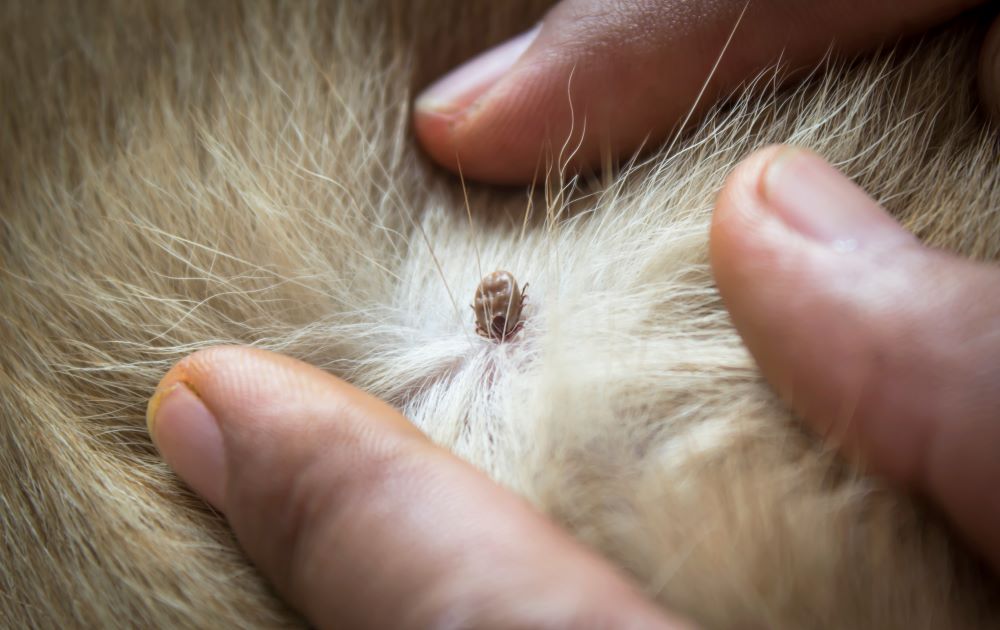
Fleas are tiny insects that can cause big problems, especially for pet owners. These blood-sucking pests can infest your home and make life miserable for both you and your furry friends. But does heat kill fleas? Read on to find out.
Understanding the effectiveness of heat in killing fleas
Heating has been recommended as a reliable way to eliminate fleas, but does it actually get the job done? The answer is affirmative. Heat can indeed be a powerful tool for getting rid of fleas in your living space. Fleas are highly sensitive to changes in temperature and exposing them to high heat can prove fatal.
Subjecting fleas and their eggs to elevated temperatures can effectively eradicate them at all stages of their life cycle. Heat treatment is particularly useful in tackling hard to reach areas like cracks and crevices where traditional pest control methods may struggle. Nevertheless, it’s worth noting that relying solely on heat treatment may not completely eradicate a flea infestation; combining it with other flea control measures is advised for optimal outcomes.
The science behind heat treatment for fleas – Does heat kill fleas?
When exposed to high temperatures, fleas and their eggs experience thermal stress, which can lead to their timely demise. The heat disrupts the cellular structure of the flea, and just ruins their metabolic processes. This means that they’ll have trouble metabolizing energy from their prey, which eventually kills them.
Heat treatment can be performed using various methods, such as steamers, dryers, or specialized heat chambers. These methods raise the temperature in the infested area to a level that is lethal to fleas. However, it’s important to ensure that the heat is evenly distributed throughout the space to effectively kill all fleas and their eggs.
Common myths on fighting fleas with heat
There are several common myths surrounding the use of heat for flea eradication. One myth is that simply turning up the thermostat in your home will kill all the fleas. While increasing the temperature can be helpful, it’s unlikely to be sufficient on its own. Fleas are resilient creatures that can survive in various conditions, so a targeted and controlled heat treatment is necessary for effective eradication.
Another myth is that freezing temperatures can kill fleas. Fleas can enter hibernation states, as well as simply move to areas of the home with warmer temperatures. They can be filled by sub-freezing temps, but only over a long period of time where they’re fully trapped in the cold.
Methods of upping the heat to kill fleas
There are several methods that can be used to apply heat for flea eradication. One popular method is steam treatment. Steamers emit high-temperature steam that can penetrate carpets, upholstery, and cracks, killing fleas and soft-boiling their eggs (gross). Steam treatment is effective in eliminating fleas from both soft and hard surfaces, but it’s typically a bit less effective than exposing them to dedicated heat chambers.
Another method is using a specialized heat chamber. These chambers are designed to raise the temperature in a controlled environment, ensuring that all fleas and their eggs are exposed to lethal heat levels. Heat chambers can be used for treating infested furniture, bedding, and other items that may be difficult to treat with other methods.
Pros and cons of heat treatment for fleas
Using heat treatment to get rid of fleas has its ups and downs. One big advantage is that it’s a natural and eco friendly approach since it doesn’t involve any chemicals. Unlike traditional pesticide treatments, heat treatment doesn’t leave behind any harmful residues. It’s also great at reaching hidden spots like cracks and crevices that other methods might miss.
On the flip side, there are some drawbacks to heat treatment. It might not be suitable for every situation, especially in homes with delicate electronics or materials that can’t handle high temperatures. Plus, relying solely on heat treatment might not be enough, so combining it with other flea control methods is recommended for the best outcome.
Other effective methods for flea control
While heat treatment can be effective, there are other methods that can help control and prevent flea infestations. Regular vacuuming can remove flea eggs, larvae, and adults from your carpets and upholstery. Washing your pet’s bedding and toys in hot water can also help kill fleas and their eggs.
Using flea prevention products on your pets, such as topical treatments or oral medications, can be an effective way to keep fleas at bay. Additionally, keeping your home clean and clutter-free can reduce hiding places for fleas and make it easier to detect and treat infestations.
Tips for preventing flea infestations
Prevention is key when it comes to fleas. Here are some tips to help prevent flea infestations in your home:
- Regularly groom and bathe your pets to remove fleas and flea dirt.
- Use flea prevention products recommended by your veterinarian.
- Vacuum your home regularly, paying special attention to areas where your pets spend time.
- Wash your pet’s bedding and toys in hot water.
- Keep your yard clean and free of debris that can attract fleas.
Hiring a professional for flea extermination heat treatment
Professional pest control teams, like Recon Pest Services have the knowledge, experience, and equipment necessary to effectively apply heat treatment and eradicate fleas from your home. They can assess the severity of the infestation, determine the best course of action, and ensure that all fleas and their eggs are eliminated.
Conclusion: Can fleas die from the heat?
In conclusion, using heat can effectively eliminate fleas and their eggs. Exposing fleas to high temperatures disrupts their cellular structure and metabolism, ultimately causing their demise. It’s worth noting that relying solely on heat treatment may not completely eradicate a flea infestation.
It is recommended to combine heat treatment with other methods for flea control, such as regular vacuuming, washing pet bedding and using preventive products. Prevention plays a crucial role in managing flea issues. By implementing preventive measures and seeking professional assistance as needed, you can successfully manage and eliminate fleas from your living space.
So, does heat really kill fleas? Yes, it does. But remember, a comprehensive approach that combines heat treatment with other methods is the key to successfully eliminating fleas and preventing future infestations.
Recon Pest Services is Omaha & Lincoln’s best bet to help you fight a flea infestation in your home or business. Reach out to us today for a free quote, and start living bite-free today!



